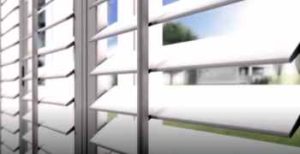In the world of home renovation and interior design, there’s a growing trend that’s hard to ignore – bamboo flooring. This isn’t just any bamboo flooring, it’s Plyboo Bamboo Flooring we’re talking about. Known for its robustness, eco-friendliness, and distinctive aesthetic appeal, Plyboo is steadily climbing the ladder of popularity.
Let’s dive deep into understanding the product, its pros and cons, and see if it truly lives up to the hype.
Pros of Plyboo Bamboo Flooring

- Sustainability: A Step Towards Green Living
Plyboo Bamboo Flooring is renowned for being a sustainable choice. Bamboo is a rapidly renewable resource, growing back to maturity within five years, while hardwoods take decades. Plyboo harnesses this natural efficiency, providing a flooring option that doesn’t compromise the environment.
- Aesthetics: Versatility Meets Elegance
With its unique grain patterns and a variety of colors, Plyboo Bamboo Flooring can complement any décor. It provides an exotic touch to your space, all the while maintaining a warm and inviting ambience. It’s like bringing a piece of nature right into your living room.
- Durability: Strength in Every Strand
Don’t be deceived by its elegance; Plyboo Bamboo Flooring is exceptionally resilient. It possesses a hardness similar to that of oak, ensuring it can withstand heavy foot traffic and resist scratches, thus promising longevity.
Read More: Pros And Cons Of Paradigm LVP Flooring
Cons of Plyboo Bamboo Flooring

- Sensitivity to Moisture
Bamboo, by nature, is susceptible to moisture and humidity. Plyboo Bamboo Flooring is no exception. Excess moisture can cause warping or swelling. It’s not the best choice for areas prone to spills or high humidity, like bathrooms or basements.
- Limited Refinishing Options
While Plyboo Bamboo Flooring is durable, it doesn’t offer the same refinishing options as hardwood. The unique manufacturing process compresses bamboo fibers, which makes sanding and refinishing a challenge.
- The Plyboo Story
Plyboo is made by Smith & Fong Co., a pioneer in the bamboo industry. Headquartered in San Francisco, the company’s operations span across the globe, sourcing bamboo from responsibly managed plantations in China. The Plyboo brand itself has become synonymous with quality and sustainability.
Plyboo Bamboo Flooring: Analytical Review
From an analytical perspective, Plyboo Bamboo Flooring ticks most of the boxes. It blends aesthetics, durability, and sustainability – traits that most homeowners seek in flooring. However, its moisture sensitivity and limited refinishing options could be deal-breakers for some.
Frequently Asked Questions (FAQs)
Plyboo Bamboo Flooring is among the top contenders, thanks to its sustainability, durability, and aesthetic appeal. However, the “best” flooring depends on individual preferences and requirements.
Bamboo flooring’s main weaknesses are its sensitivity to moisture and limited refinishing options. It’s important to consider these factors when choosing bamboo flooring.
Plyboo is made by Smith & Fong Co., based in San Francisco. The bamboo used in Plyboo products is sourced from responsibly managed plantations in China.
Yes, bamboo plywood, like Plyboo, is strong and durable. It has a hardness similar to oak, making it a suitable choice for high-traffic areas.
Two main disadvantages of bamboo are its sensitivity to moisture, which can lead to warping, and its limited refinishing options compared to traditional hardwoods.
While bamboo flooring is gaining popularity, its moisture sensitivity and refinishing limitations are factors that deter some homeowners. Also, as it’s relatively new to the market compared to traditional hardwoods, it’s still building its reputation.
Read More: About NuCore Rigid Core Flooring
The Verdict
Choosing the perfect flooring is a delicate balance of aesthetics, durability, cost, and environmental impact. Plyboo Bamboo Flooring successfully straddles these aspects, making it a compelling choice for the modern homeowner. Its eco-friendly nature is a big selling point, especially for those looking to make more sustainable choices.
However, it’s essential to consider the cons too. If you live in a region with high humidity or have areas prone to spills, Plyboo Bamboo Flooring may not be the right fit. Similarly, if you’re someone who enjoys the option of refinishing floors to keep them looking new, the limited refinishing options could be a drawback.
In the end, the decision to choose Plyboo Bamboo Flooring, or any flooring for that matter, depends on your unique circumstances and preferences. Flooring is a significant investment and a long-term commitment. Take your time, do your research, and make a choice that feels right for you.
With Plyboo Bamboo Flooring, you’re not just choosing a flooring option; you’re choosing a lifestyle – a lifestyle that embraces sustainability, appreciates nature’s beauty, and values durability. If these resonate with you, Plyboo Bamboo Flooring might just be the perfect addition to your home.
Wrapping Up
So there you have it, a comprehensive review of Plyboo Bamboo Flooring. Our goal was to provide you with a balanced perspective, highlighting both the pros and cons, to help you make an informed decision. The world of flooring is vast, and bamboo flooring, with its unique traits, certainly brings a fresh perspective.
As we step into a future where sustainability becomes increasingly crucial, products like Plyboo Bamboo Flooring are more than just a trend; they’re a testament to innovation and an affirmation of our commitment to the planet. So, are you ready to bring home a piece of nature?
Remember, every home tells a story, and your choice of flooring can add a remarkable chapter to it. Choose wisely, and let your home reflect your values, personality, and style. With Plyboo Bamboo Flooring, you might just find the perfect material to pen that chapter.


